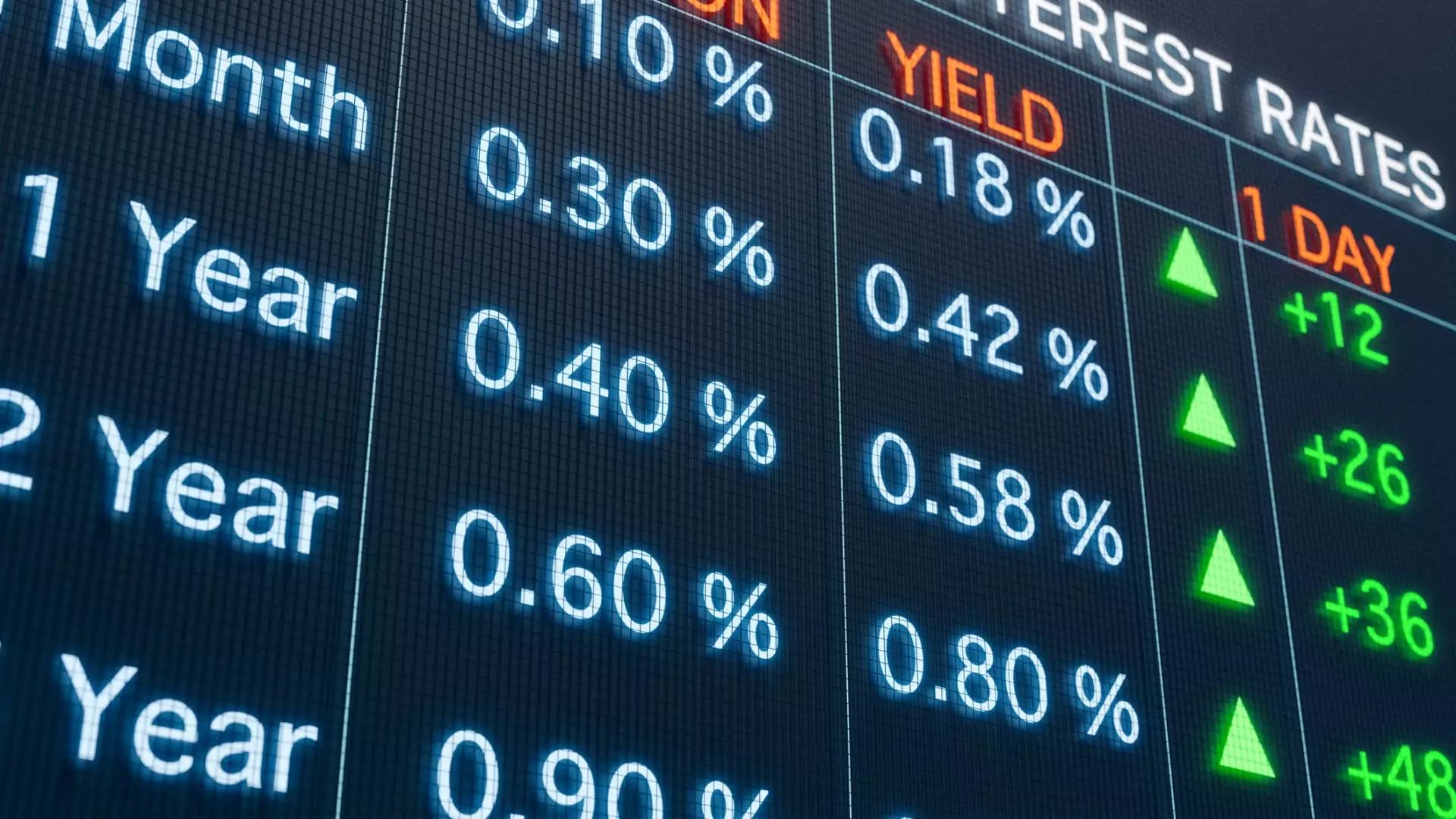This week’s bond market movements cast a stark light on the fragile and often misguided optimism surrounding central bank interventions. While the Federal Reserve’s decision to slash interest rates appears to signal renewed stability, the reality beneath the surface suggests a far more complex and potentially perilous scenario. The surge in long-term Treasury yields, defying the Fed’s easing efforts, signals a broader loss of faith among investors that monetary policy alone can steer the economy clear of turbulence. Instead of providing clarity, rate cuts seem to be fueling an undercurrent of skepticism—highlighting the disconnect between the Fed’s narrative and market realities.
The move by bond traders to sell long-term securities following the rate cut reveals a crucial insight: markets are not convinced that easing measures will curb inflation or support sustained economic growth. This selloff drives yields higher and prices lower, illustrating a fundamental truth—when investors doubt the central bank’s ability to manage future risks, they demand higher premiums for holding long-term debt. It’s a stark reminder that monetary policy, no matter how aggressive, can’t erase fundamental economic vulnerabilities or underlying inflationary pressures.
Inflation and Economic Realities: A Troubling Disconnection
One of the most alarming signs is the persistent inflation rate, hovering above the Fed’s 2% target, despite multiple rate cuts. The recent economic projections from the Fed project a slightly uptick in inflation for the coming year, further compounding concerns about the efficacy of current policy measures. When the central bank signals a willingness to cut rates in an environment of still-strong inflation, it can be perceived as taking its eye off the inflation ball—an act of complacency that risks embedding inflation expectations deeper into the economy.
Investors, especially those in longer-dated bonds, interpret this complacency as a green light for higher yields. The rise in yields and decline in bond prices indicates growing skepticism about the Fed’s ability to contain inflation without resorting to more aggressive measures later. The broader implication is that the economy may be perilously close to a situation where rate cuts are no longer sufficient, or worse, become a symptom of a central bank caught in a policy trap—caught between trying to stimulate growth and restrain inflation simultaneously.
Market Sentiments: Beyond the Short-Term Buzz
While stock markets responded with enthusiasm to the rate cut—sending indices to record highs—such reactions are often misleading. They reflect short-term optimism rooted in speculation rather than sustainable economic fundamentals. Meanwhile, bond investors are attempting to interpret the broader implications of these moves, scrutinizing the central bank’s projections and future policy signals. The disconnect between stock market exuberance and bond market skepticism underscores the complex, often contradictory signals that define economic health today.
Notably, despite multiple rate reductions since early 2024, yields on the 10-year Treasury remain relatively unchanged—an indicator that markets are looking beyond immediate policy actions. This stability suggests that investor confidence in the long-term outlook remains fragile, and that the bond market perceives significant risks that are not addressed solely through the easing of short-term interest rates.
The International Dimension and the Risk of Complacency
The global context complicates the US economic outlook further. Yields on international bonds are trending higher alongside domestic rates, driven by overseas economic developments and foreign central bank policies. This interconnectedness heightens the risk for the US economy because it constrains the Fed’s room for maneuver. If international yields continue climbing, they will exert upward pressure on US long-term rates even amidst domestic easing efforts.
Furthermore, the rise in bond yields, driven partly by falling unemployment claims, presents a paradox: strong employment data typically signals a healthy economy, yet it also reduces the urgency for aggressive rate cuts and risks fanning inflation. However, many commentators warn that a rally in bond yields—especially when driven by good news—may have unintended consequences. Elevated long-term yields increase borrowing costs for consumers and corporations, potentially stalling growth and deepening inequality in access to credit.
The Illusion of Relief and the Hidden Threats
The optimism sparked by a supposed victory over recession—reflected in declining yields—is dangerously misleading. As RBeyn, the economist, astutely warns, falling bond yields often prelude economic downturns and recession risks. This inverse relationship is a stark reality: when bond yields decline significantly, it often signals investor fears of slower growth or recession ahead. Conversely, rising yields can reflect healthier expectations but also threaten to choke off economic expansion if they persist unchecked.
The recent bond market behavior underscores an important—yet underappreciated—truth: effective monetary policy isn’t simply about cutting rates. It involves managing expectations, inflation, growth, and international dynamics simultaneously. When markets doubt the sincerity or sustainability of policy measures, the resulting yield volatility can destabilize markets and threaten to derail the very growth that policymakers aim to support.
Ultimately, the current bond market signals serve as a cautionary tale. The combination of rising yields, inflation concerns, and international pressures exposes the fallacy of relying solely on central bank policies to maintain economic stability. The real challenge lies in understanding that what the markets are really telling us is that the current approach may be creating more risks than it is mitigating, and that premature optimism about a straightforward recovery is, at best, naive.

